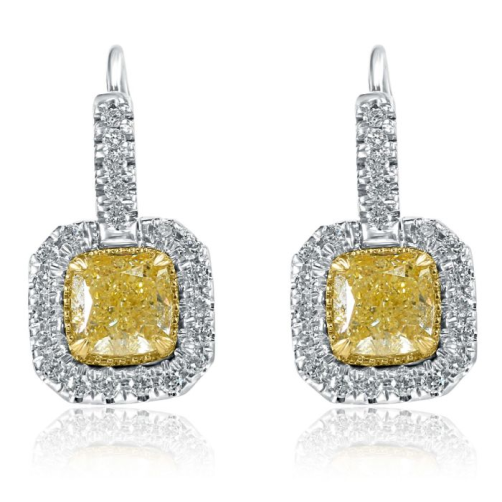Education Center
How To Choose A Diamond
Here at US Jewelry Factory® we want to make sure we are providing you with the perfect diamond for you or a loved one to treasure forever. In choosing a diamond there are many ways to clarify if it's right for you.
We sell clarity enhanced, color enhanced, not treated and GIA Certified diamonds. All our diamonds are natural earth mined diamonds.
Clarity Enhanced Diamond
Enhanced Diamonds are real diamonds and come from the same mines as all other natural diamonds.
The clarity enhancement term refers to a revolutionary process that optically eliminates "feathers", which are naturally occurring in most diamonds. The result is a more visually stunning diamond that you can purchase for significantly less price than a similar-looking, non-enhanced diamond. The clarity enhancement process is not visible to the naked eye.
All of our clarity enhanced diamonds are extremely shiny and bright.
Please treat your Clarity Enhanced Diamond like you treat any other gemstone that in your possession (i.e. green emeralds, rubies, topaz, etc...). That means that the best way to clean it is water and soap or non-Ammonia jewelry cleaner.
At the jeweler's bench, Ultrasonic cleaning, steam cleaning or boiling water and detergent will not affect the enhancement. Only the direct heat of a torch or boiling acids or ammonia bases can damage the treatment.
Color Enhanced Diamond
Color enhanced diamonds are natural, mined diamonds. they are not lab grown diamonds. The main methodology is called HPHT - High Pressure High Temperature. The treatments simulate what actually happens in nature to give diamonds color.
The choice of a shape is best based on personal taste and the design of the jewelry.Traditionally round cut diamonds are known for providing the combination of the best qualities a diamond can have. However, there are other shapes that can emphasize a diamond's different features.



The top gemologists in the world consider the cut of a diamond to be the most important feature in choosing a diamond. Even a diamond with perfect color and clarity could nevertheless have poor brilliance if it is not well cut. Diamonds can carry cut grades of Ideal, Excellent, Very Good, Good, or Fair.
The way a diamond is cut determines how it reflects light, which is responsible for its sparkle. A well-cut diamond is cut by a skilled professional to the best proportions possible so that light will be reflected from all sides.


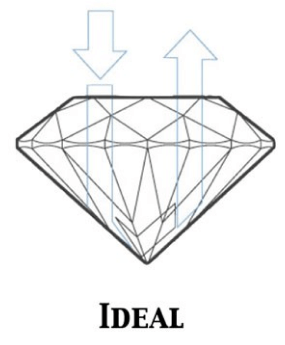
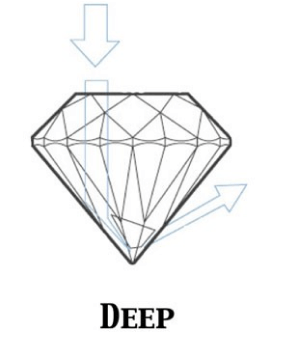
If its mirror like facets and disperses through its top. Too shallow a cut will let light escape through a diamond's bottom, causing it to appear dull, while too deep a cut will allow light to be lost through a diamond's sides, making it appear dark.
Under a jeweler's magnifying loupe or microscope diamond imperfections can look like crystals, tiny rivers, or clouds. A diamond's clarity is determined by the presence or absence of inclusions--fewer inclusions mean better clarity--and how visible they are. The greater a diamond's clarity, the greater its brilliance and value. A diamond categorized as internally flawless will have no inclusions, but this is extremely rare.
Diamonds with very, very small inclusions are graded as VVS1 or VVS2. Those with larger inclusions are considered lower-grade. Diamonds with inclusions that are visible with the naked eye are graded I1 to I2.
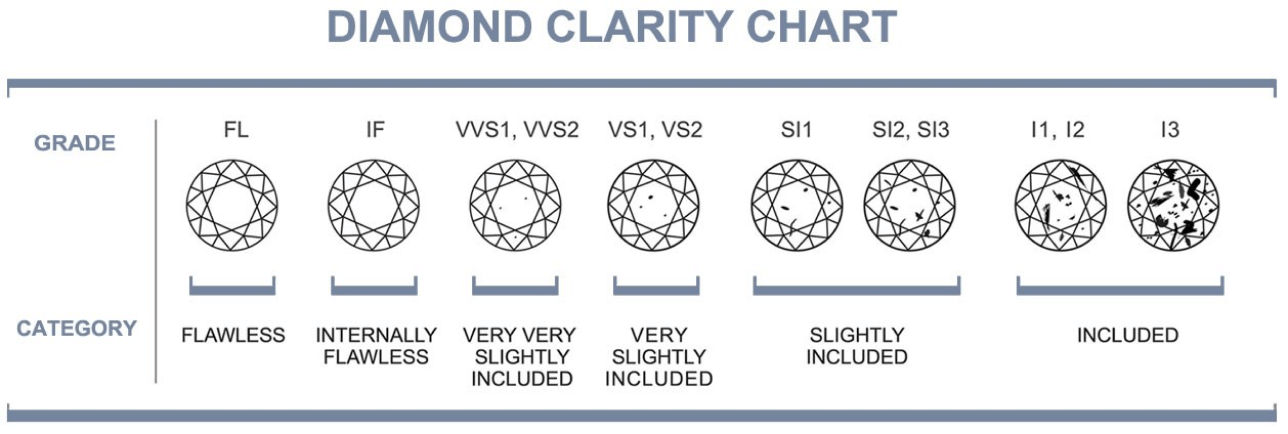


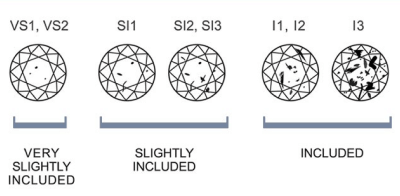
Colorless diamonds have traditionally been considered the most valuable, though diamonds come in a wide range of colors. Most diamonds are graded on a scale using the letters of the alphabet, from D (colorless), the best grade, through Z (a light yellow). It is difficult for the untrained eye to notice such variations in color unless stones are being compared side by side. They range in hue from the more common yellow (also graded Z+ on the alphabetic scale) to pink, blue, green, red, and even black and white.



Diamonds that are graded D, E, and F tend to be the most expensive because of their rarity. However, any diamond you buy should have a good balance of cut, color, and clarity, so as to impart the most brilliance and dazzle possible.


Carat are the measurement scale used to identify a diamond's, with one carat being equivalent to 100 points. You will often see a diamond referred to as a 3/4-carat stone or a 75-point diamond. Larger stones are often more highly valued, but size should not be the only consideration--high brilliance, which varies according to clarity, cut, and color grade, is highly desirable in a diamond.






